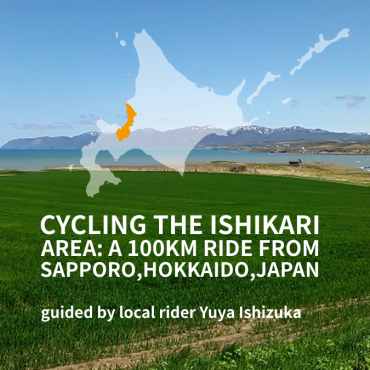
A 100km ride from Sapporo , Hokkaido ,Japan
Guided by local rider Yuya Ishizuka
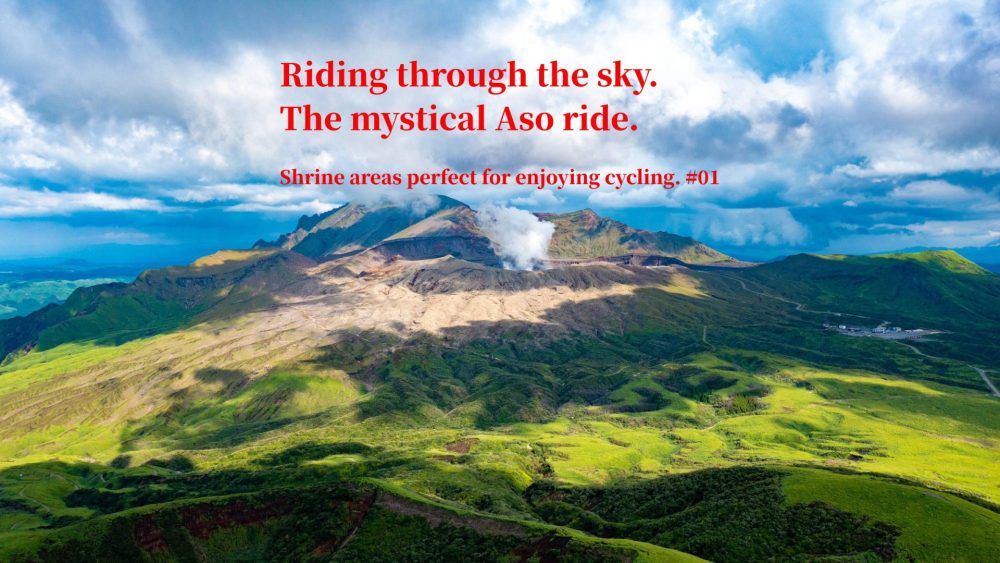
For many Japanese people, Kyushu holds a special significance. It breathes with the eternal romance of numerous myths, and the proximity of untouched nature to urban areas is remarkable. This environment has fostered the unique culture of Kyushu. Among them, Kumamoto Prefecture is an ideal place to experience the natural beauty and culture of Kyushu, with attractions such as Mount Aso (including the five peaks of Takadake, Nekodake, Nakadake, Eboshidake, and Kishimadake, as well as the outer rim and caldera), Kumamoto Castle, hot springs, and natural springs. This time, let’s introduce the Kumamoto ride, which visits the Aso Shrine, which has nurtured the culture of this area, and explores the vast scenery of the Aso Nakadake crater.
1. Aso , the Land of God
2. Ride Right from the Airport! Through the Grasslands to the Roadside Station
3. Recharge with a View of the Aso Five Peaks!
4.The Turnaround Point: A Dynamic Volcano


The recommended course this time is a visit to the active volcano, the Nakadake crater of Mount Aso, from Aso Kumamoto Airport (Kumamoto Airport), and a visit to Aso Shrine. You can enjoy riding while looking at the caldera of Mount Aso and downhill riding to the fullest. The Nakadake crater emits powerful earth rumblings and vigorously spews smoke, making it popular among tourists from Japan and abroad. In the Aso area, which boasts the “Aso Kuju National Park” covering over 70,000 hectares, you can undoubtedly enjoy some of Japan’s finest natural landscapes.

The purpose of this ride is Aso Shrine and the surrounding mountainous region. Aso Shrine is an ancient shrine with a history of over 2000 years, enshrining Takeiwatatsu-no-Mikoto, one of the twelve family deities who pioneered this land. It is said that volcanic craters have been objects of national prayer in Japan since ancient times. Aso Shrine has blended volcanic worship with reverence for the Aso volcano crater as its object of worship, garnering the respect of the people.
The Nakadake crater has been referred to with names such as “shinrei-no-ike” (divine spirit pond), “rei-no-ike” (sacred pond), and kami-no-ike” (divine pond), symbolizing its spiritual significance. It was likely called a pond because water accumulated inside the crater. It was believed that gods resided in this pond, and climbing to the crater was an act of faith. Truly, Aso is a land of the gods.
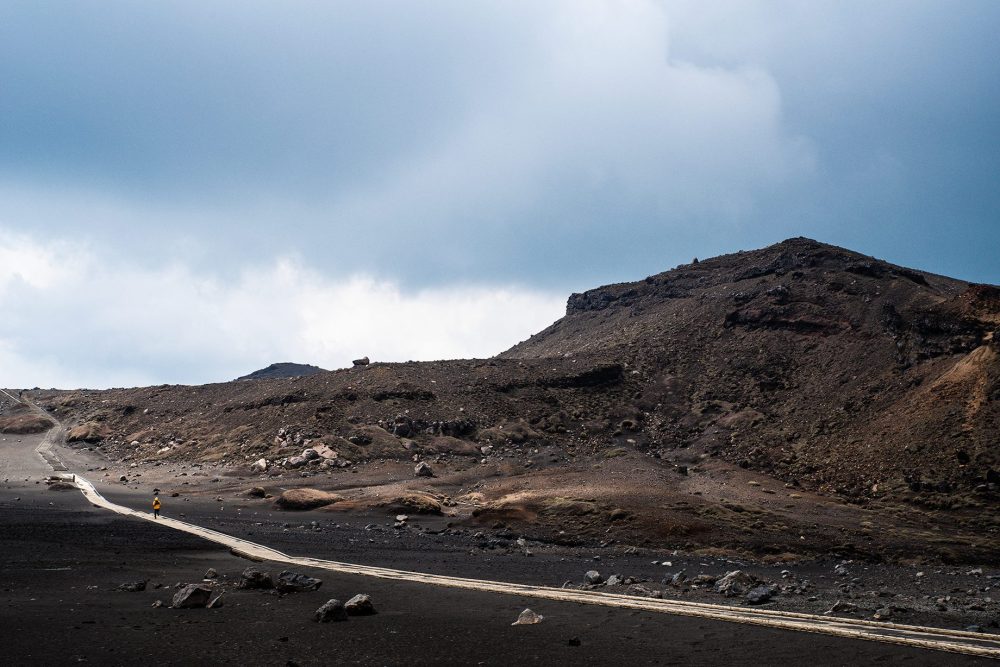
Upon arrival at Kumamoto Airport, the first thing to do is assemble your bicycle. For large luggage, there are coin lockers on the 1st floor of the passenger terminal building. Please be mindful of the operating hours, which are from 6:30 AM to 9:30 PM. If you exceed the time, you might end up spending the night in flashy cycling wear. For those staying in Kumamoto Prefecture or surrounding areas, consider using a luggage delivery service to your hotel. You can arrange this at the baggage delivery counter (Yamato Transport).
Once you leave Kumamoto Airport, head towards “Michi no Eki Aso” (Roadside Station Aso). A recommended route is via the Milk Road, which takes you to Hano in Aso City while enjoying views of the ridges in the northeastern part of the outer rim. This road is said to have been named because it was used to transport milk from the ranches. While there are many scenic routes in Aso, the Milk Road offers the most expansive landscape. However, there’s one problem: the stunning views along the way might tempt you to stop frequently. Be sure to manage your time wisely.
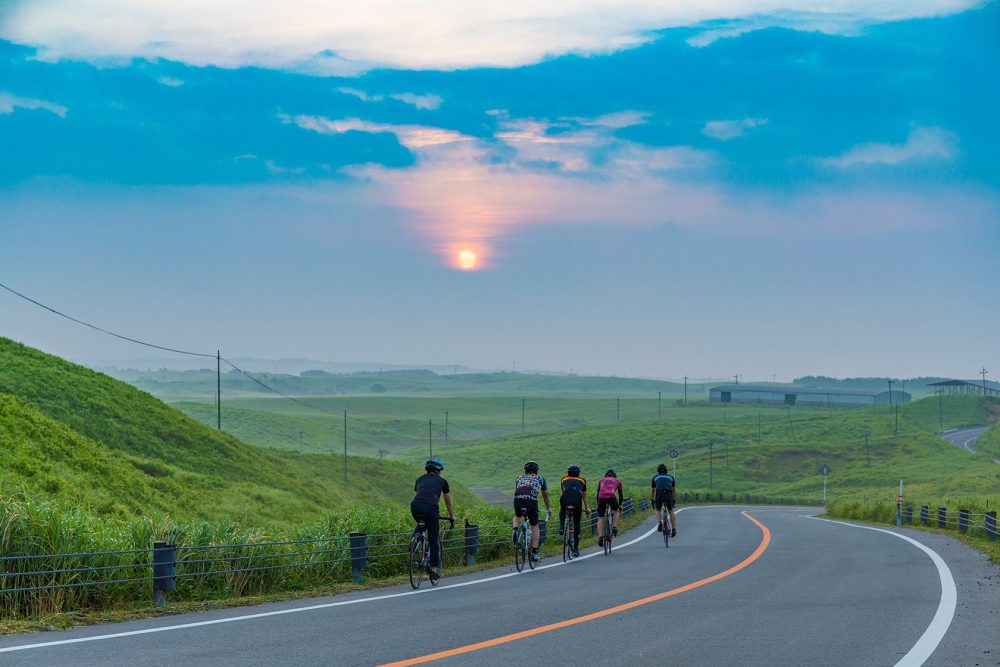
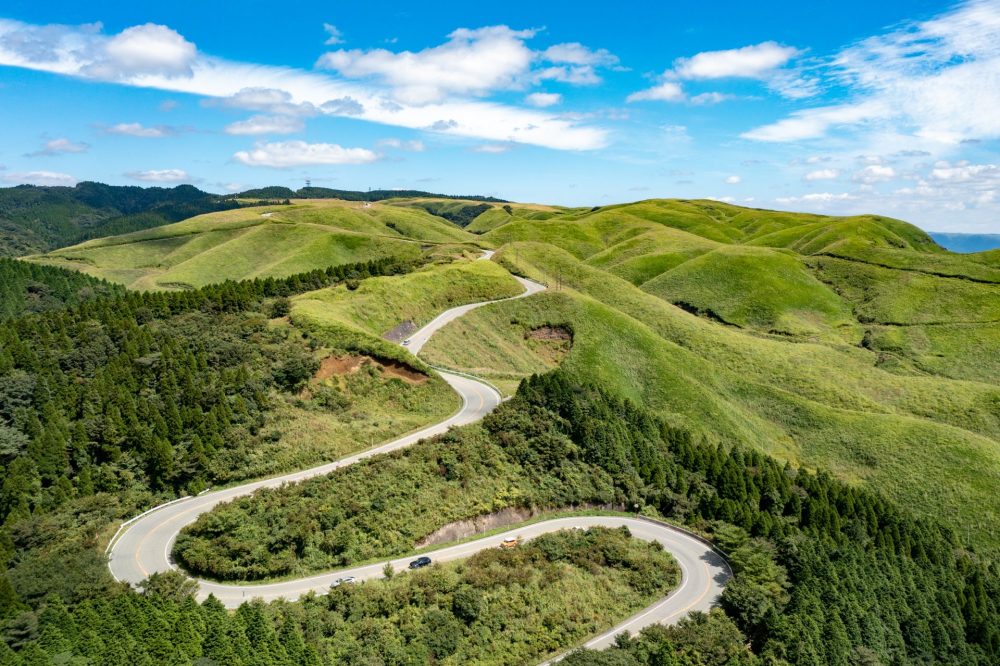
Map:From Kumamoto Airport to Aso Michi no Eki
If you’re not captivated by the magnificent scenery, you’ll arrive at the Michi no Eki in about 2 hours from Kumamoto Airport. This Michi no Eki offers a majestic view of the Aso Gogaku (Aso Five Peaks) in front. It boasts a variety of local products from surrounding farms, including vegetables, fruits, sweets, and bento boxes. Be sure to have lunch at the Michi no Eki.
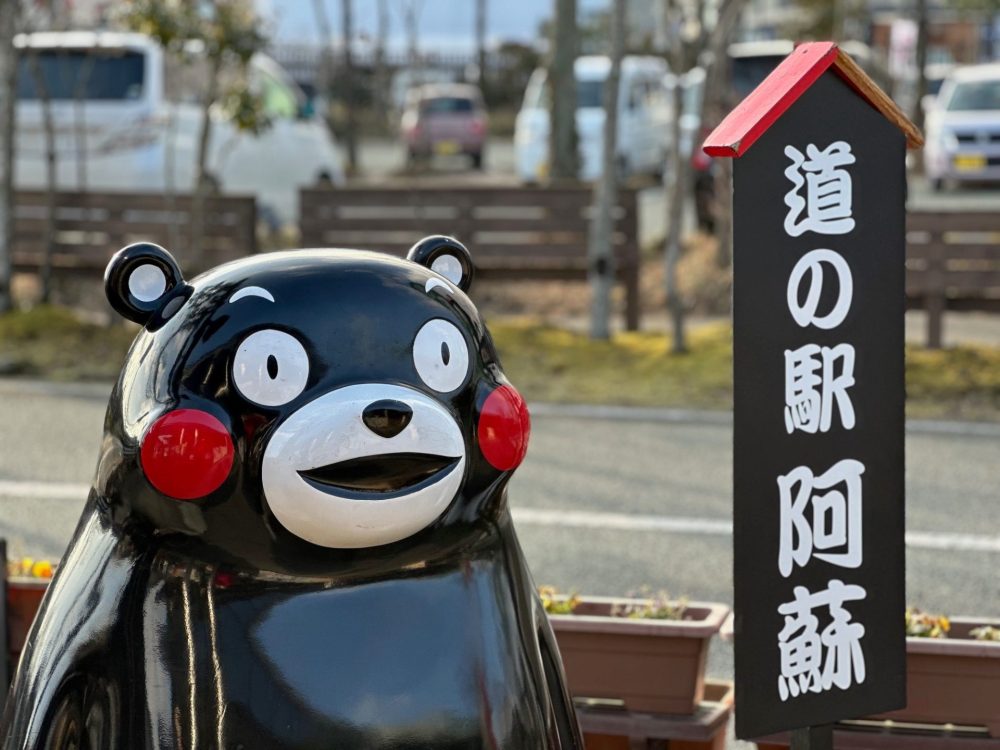

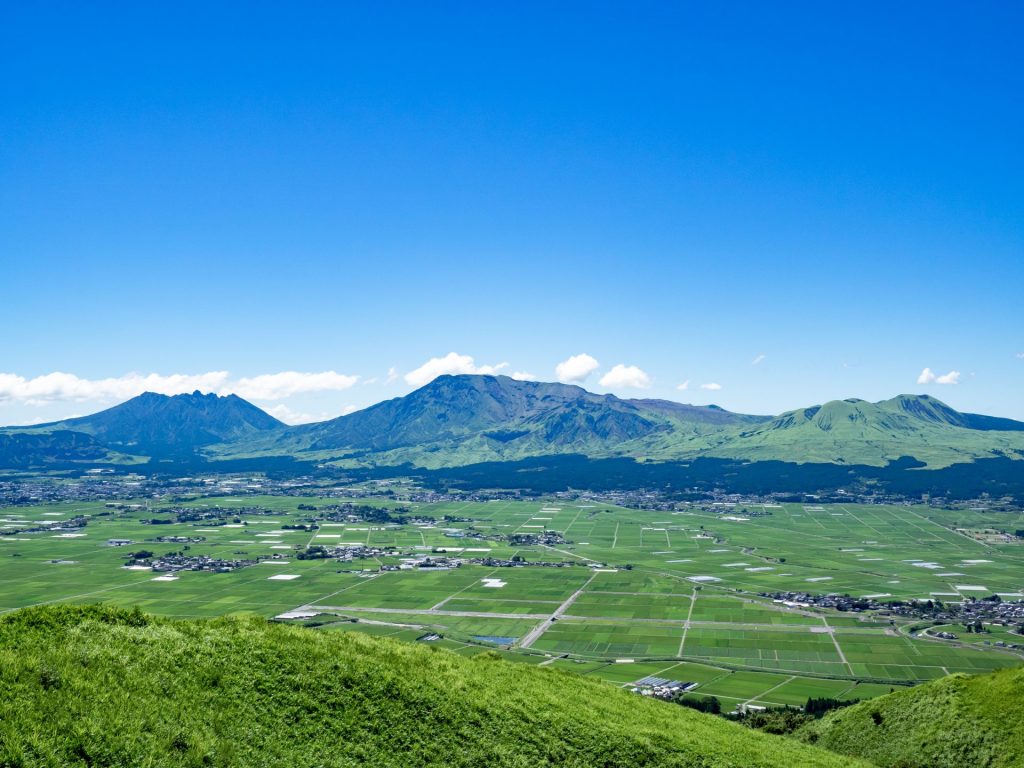
On weekends and holidays, the area is bustling with many tourists. If you can’t get into your desired restaurant, I recommend getting a bento (boxed meal). Among them, bento using the famous Aso beef known as “Akaushi” is popular. Also, there are plenty of sweets made with fresh milk, so while enjoying the Aso Five Peaks with your eyes, make sure to replenish your calories and carbohydrates for the second half of the day.
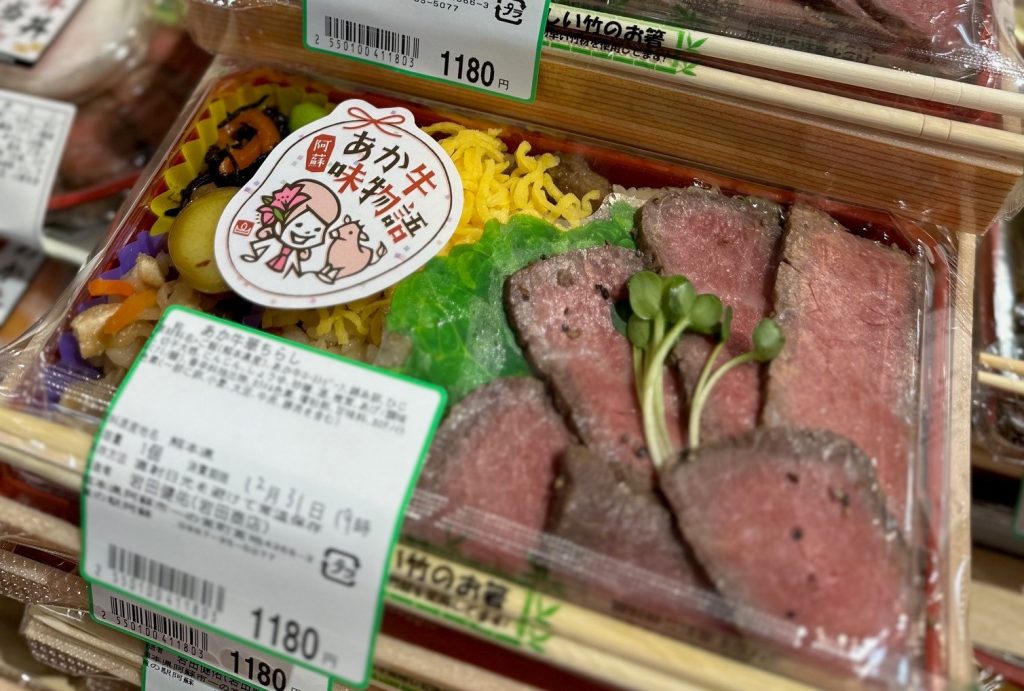

After taking a sufficient break and replenishing your energy, it’s time to head out from the roadside station towards the first crater of Mount Aso, located about 15km away. Along the way, you’ll encounter the vast grassland known as Kusasenrigahama. Here, you’ll find the Aso Volcano Museum, where you can systematically learn about the mechanisms of volcanoes, from the formation of Mount Aso with the world’s largest caldera to its current ecosystem. It’s worth a visit for those interested.
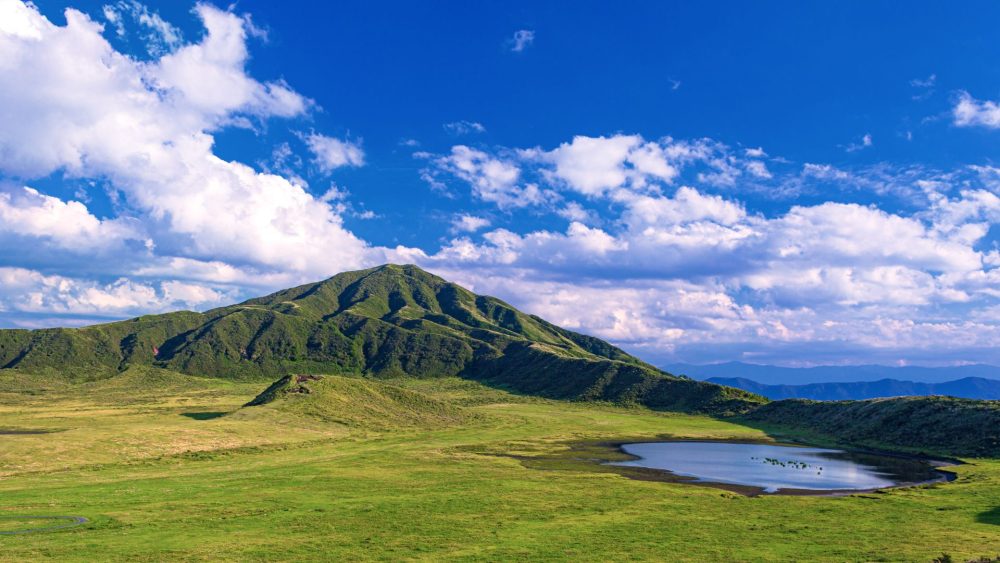
Shortly after Kusasenrigahama, you’ll arrive at our turnaround point for this ride: the first crater of Mount Aso, also known as Aso Nakadake First Crater. Here, you’ll encounter landscapes reminiscent of primordial Earth, which will surely take your breath away. With a diameter of 600 meters and a depth of 130 meters. From its massive 4-kilometer circumference, you can observe the vigorous emission of white smoke up close. However, please note that volcanic gas is emitted from the crater, so individuals with respiratory or heart conditions can not visit the crater.
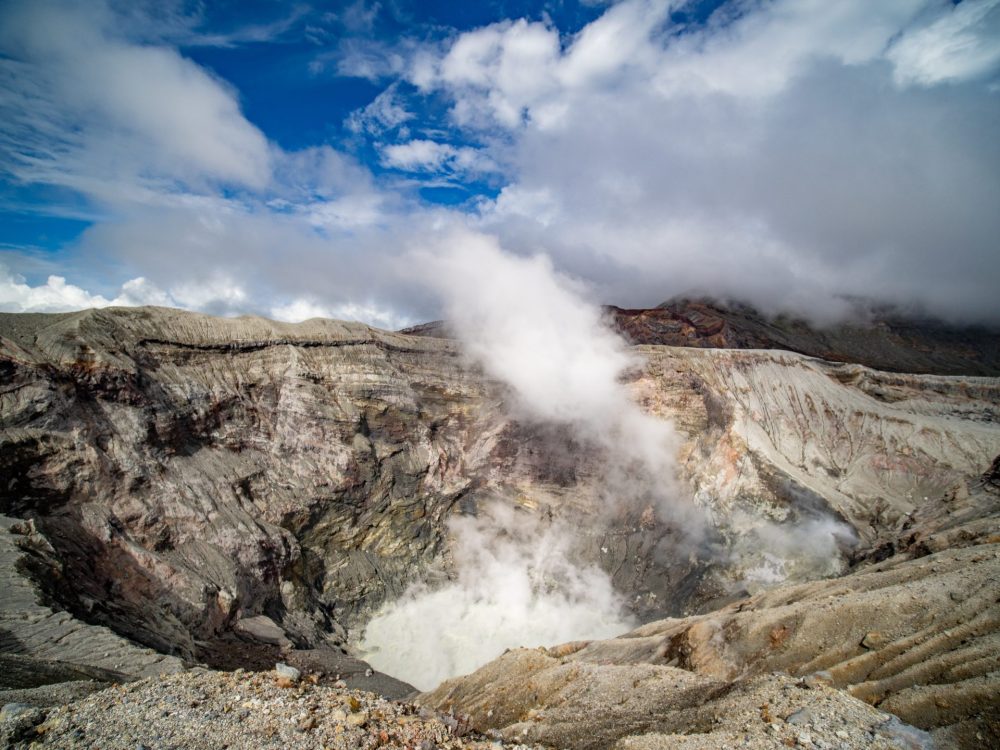
About 1.6 kilometers from Aso Nakadake first crater , there is the Aso-sanjo Shrine. In contrast to the Aso Shrine at the foot of the mountain, known as “Ge-gu,” this mountain-top shrine has been called “Jyou-gu.” In early June, a ritual called “Kako Chin-sai” is performed, where ceremonial paper streamers are thrown into the crater to pray for the calmness of volcanic activity. If you have some extra time, it’s worth extending your visit to this shrine.
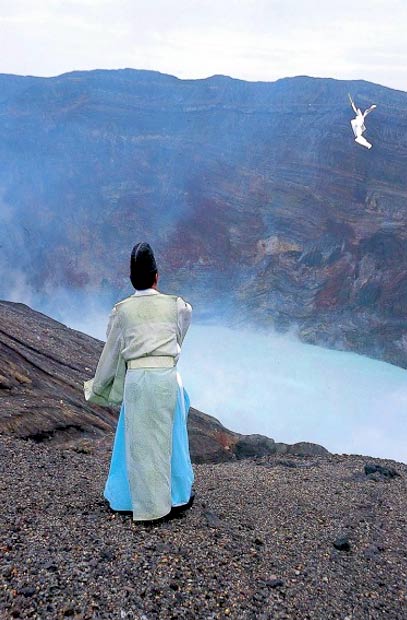
Map:From Aso Michi no Eki to Aso Nakadake
Now, let’s head back towards the Roadside Station along the same route we came. The road from the Roadside Station to Mount Aso was mostly uphill, so the return trip will be mostly downhill. However, it’s important not to get too caught up in the beautiful scenery. There are also many motorcyclists touring the area, so caution is advised. Especially when navigating curves, please reduce your speed and drive safely. Upon reaching the Roadside Station, take National Route 57 and proceed via Showa Street towards Aso Shrine.
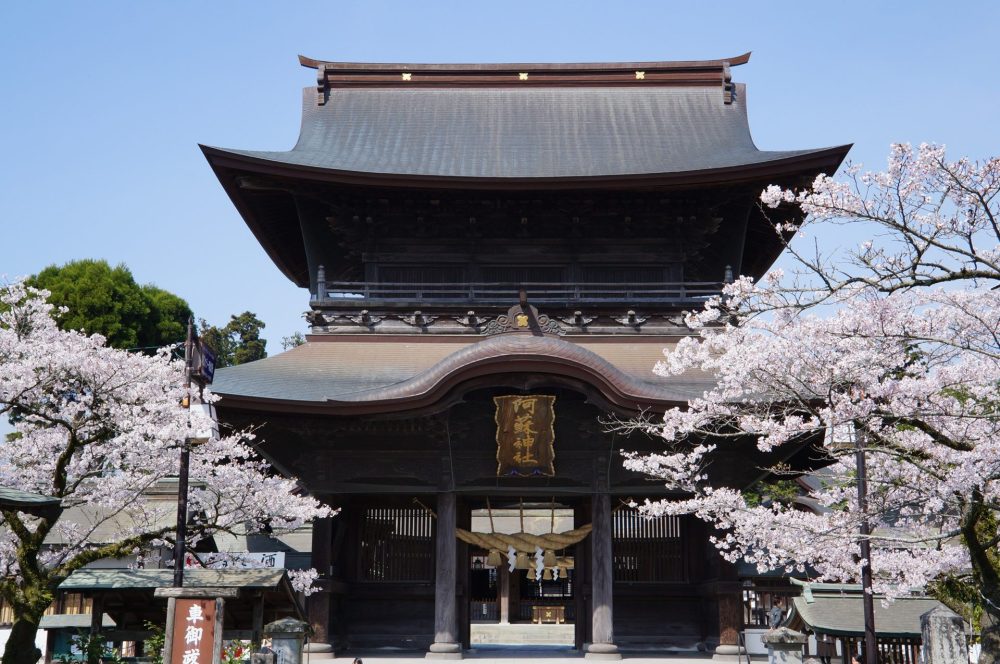
Aso Shrine, the head shrine among approximately 500 “Aso Shrines” nationwide, is an ancient temple with a history of about 2300 years. Although it suffered extensive damage, including the collapse of the gate and main hall, due to the Kumamoto Earthquake in 2016, the restoration work on the gate was finally completed in December 2023, leaving only the reconstruction of the gate connecting corridor remaining. It’s remarkable how this shrine is intricately connected to the faith in the Aso volcano crater. Moreover, the Ichi-no-Miya Gate Shopping Street near Aso Shrine is home to a spring called “Mizuki,” revered locally as the divine spring.
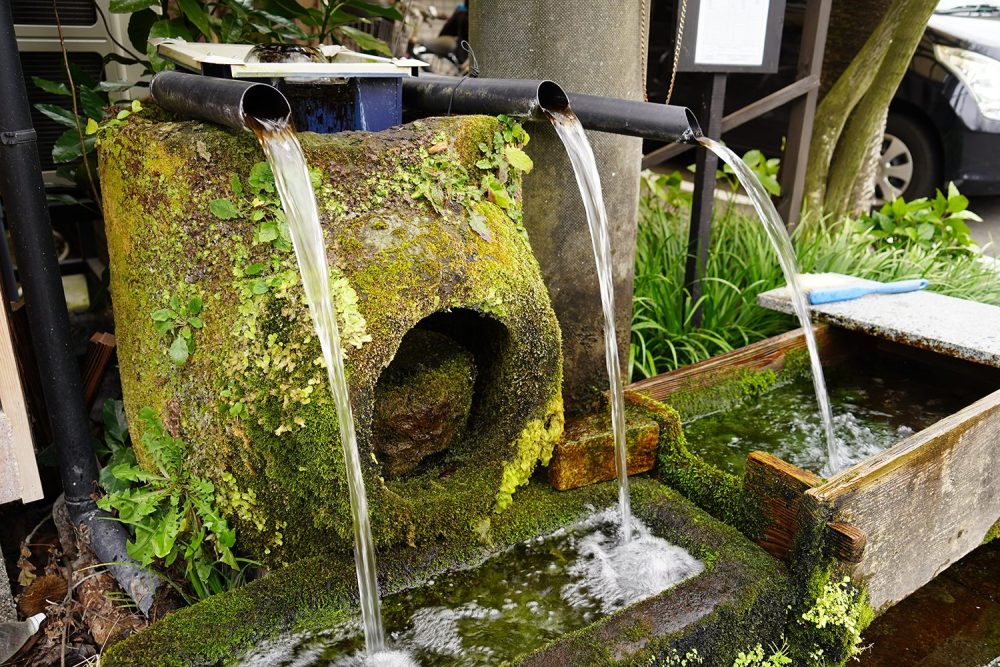
Let’s drink the spring water, refined over decades, and receive the power of Aso, then leisurely return to Kumamoto Airport. However, be mindful of the time for the coin lockers!
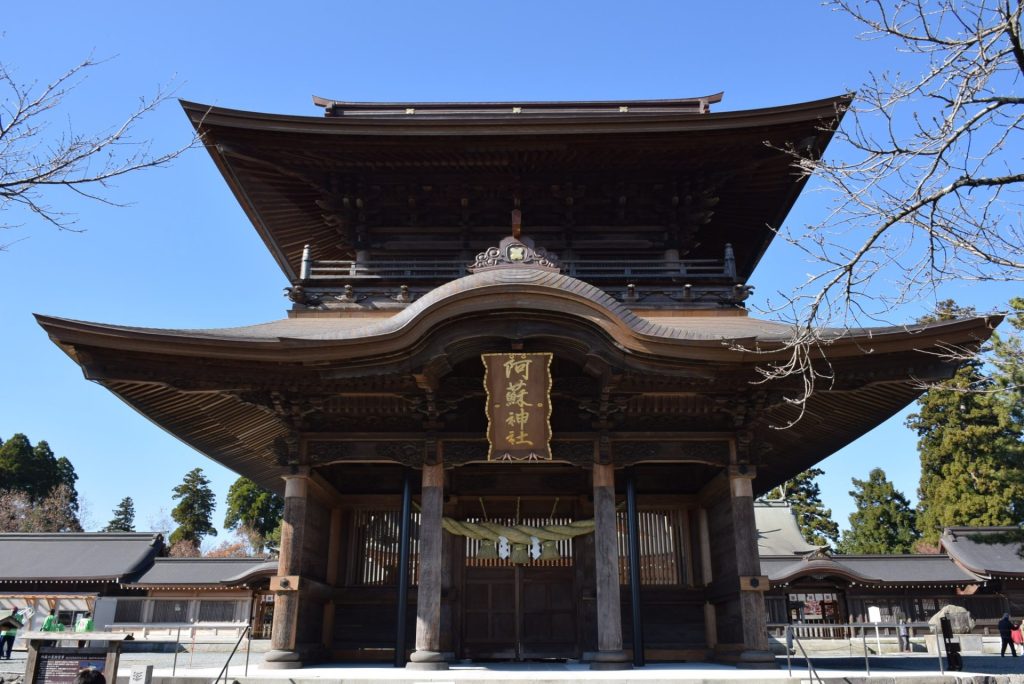


Map:From Aso Michi no Eki to Aso shrine
🚴♂️ATTENTION
Cycling is prohibited within the precincts of Aso Shrine. Please ride with proper etiquette.
Also, depending on the activity status of Mount Aso’s central crater, there may be restrictions that prevent visiting the crater. Please check the latest information from the following source.
🚴♂️Route
From Kumamoto Airport to Aso Michi no Eki: 31.5km
From Michi no Eki to Nakadake: 17km
Round trip to Aso Shrine: 4km
Approximately 105km in total for each round trip.
Text_井上英樹/Hideki Inoue
I am from Amagasaki City, Hyogo Prefecture, Japan. I work as a writer and editor. My hobbies include hot baths, skiing, and fishing. Although I have no personal connection, I am independently conducting research on Shiga Prefecture. I prefer an active fishing style called “RUN & GUN,” which involves moving around actively instead of staying in one place. I am planning to purchase a car to transport my bicycle to adopt this style, which might seem a bit counterproductive.
Post Date:2024.02.16